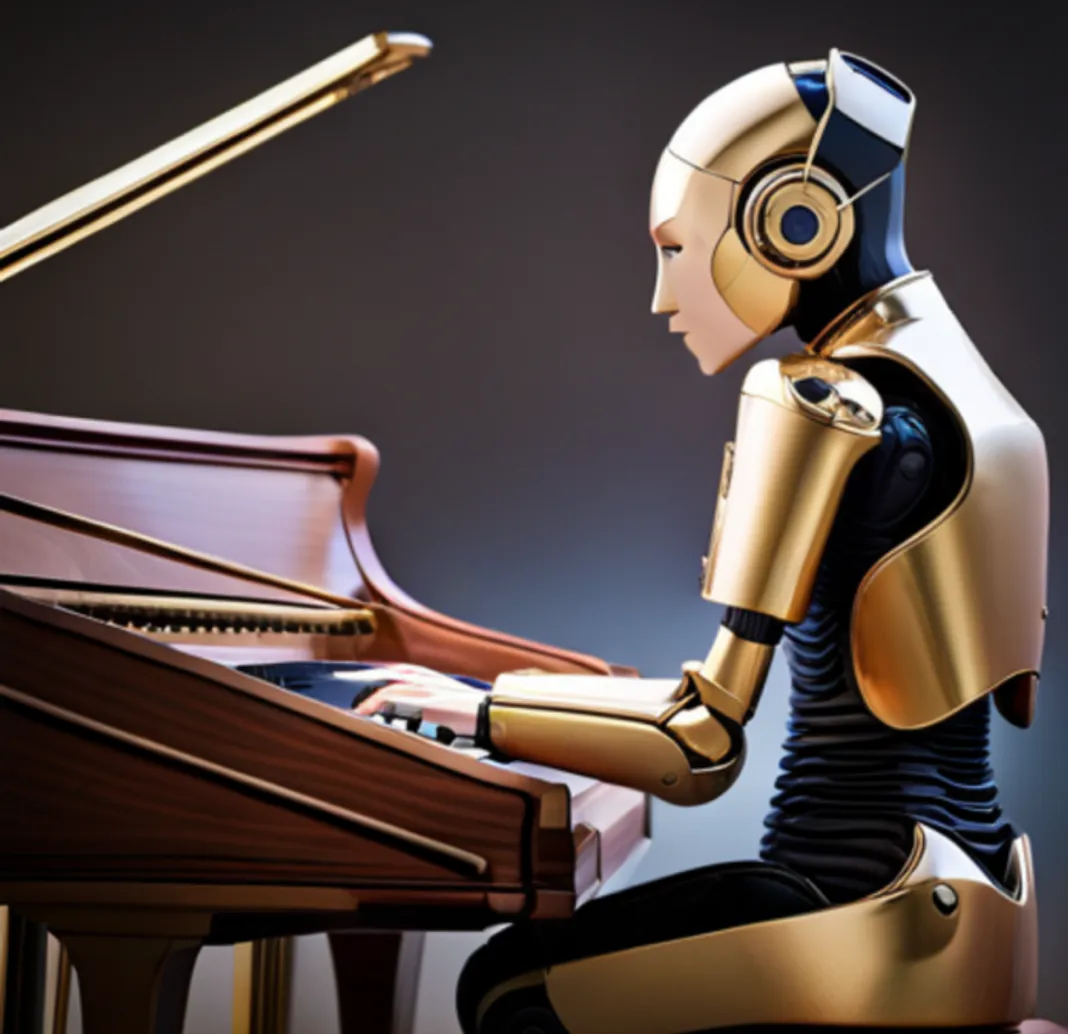Did you know that machine learning can mimic Beethoven? Or that data science can turn a black-and-white film into 4K? This isn’t just tech talk; it’s a creative revolution going on under our very noses.
Imagine you’re listening to a symphony and it just stops. Not familiar with that? Well, neither was I … until I heard Schubert’s Symphony No. 8. Halfway through, it abruptly ends, unfinished by its famed composer, like my many attempts to assemble IKEA furniture. No one really knows why Schubert quit work on it. Some say he contracted syphilis and suffered deteriorating health. Some say he got distracted by another piece. It’s a mystery, the subject of open speculation by historians and classical music lovers. What we know is that Schubert lived on for six years after abandoning the symphony. For some uncertain reason, he wrote only two of its four movements, and that was all folks. Musicus interruptus. Over and out. Symphony 8 has left people hanging like a bad 5G connection on a ski trip.
Until now. After two centuries, the composition’s final movements are finally written. And guess what? A smartphone with AI did it. Yes, the same device you use to take selfies, play Candy Crush or ignore phone calls from unknown numbers–the phone you accidentally dropped in the toilet once or twice while posting on social media–now composes symphonies.
You’re about to find out how.
AI: The New Maestro in Town (And It Fits in Your Pocket)
Need to complete the work of an all-time master? Enter Huawei’s AI technology. A maestro with a digital baton, it is ready to finish what Schubert started. It’s like Beethoven meeting Siri, a blend of classical genius with modern tech-savvy. And it all happened on a Huawei smartphone.
When the Chinese technology company decided to try and use AI to complete Schubert’s symphony, it was with the help of the Emmy-winning producer, composer and multi-instrumentalist Lucas Cantor. Engineers fed music, in the form of data, into the phone’s dual neural processing unit, or NPU, a specialized microprocessor that accelerates machine learning. The AI then created melodies from that information, and Cantor orchestrated those melodies into the final two movements. It’s like having a personal Mozart on speed dial.
The new completion was performed in London at Cadogan Hall, in an event hosted by British singer Myleene Klass. Speaking ahead of that world premiere, Cantor said working with the AI was “like having a collaborator who never gets tired, never runs out of ideas.” But, he added, having his music performed immediately after Schubert’s was slightly nerve-wracking: “It’s a bit like being a comedian and having the greatest comedian in the world go on before you.”
Talk about a tough act to follow!
The Future of AI: Beyond Music (And Beyond Your Smartphone Screen)
Imagine a world where AI doesn’t just crunch numbers; it speaks, sings, and composes. It’s not just about algorithms, it’s about artistry, creativity, and innovation. Walter Ji, the president of Huawei Consumer Business Group, said: “We used the power of AI to extend the boundaries of what is humanly possible and see the positive role technology might have on modern culture.”
And the completion of Schubert’s Unfinished Symphony is just the beginning.
A Symphony of Possibilities
For those who’ve never heard of it, Bark AI is a cutting-edge AI text-to-speech and music maker that’s taking the tech world by storm. It isn’t just a tool; it’s a creative partner, transforming the way we interact with sounds and music. The main difference between Bark AI and an ordinary text-to-speech generator is that the latter focuses solely on converting text into spoken audio. Bark AI, a fully generative text-to-audio model, not only creates speech but music, background noise and simple sound effects.
What’s especially cool, but also a bit creepy about Bark AI is that it can also produce nonverbal human communications like laughing and crying or even a gentle sigh, which a text-to-speech generator cannot do. As an open-source project, Bark invites collaboration and innovation from nerds and hipsters around the globe. However, due to the way it makes sound pretty much from scratch, BARK currently produces no more than 15 seconds of generated content at a time. But fear not, fellow geeks and voice-over enthusiasts … I’ve got some cool stuff in the works for Bark, such as voice-cloning with AI podcast producer/script writer agents that can produce full stories, as well as sound effects and music from a television or film treatment upload. To name a few interesting tweaks.
So here’s the deal. AI like this is a bridge between the past and present, the classical and the contemporary. It’s a symphony that’s playing a magical new tune, one that’s both timeless and revolutionary.
To quote Don Equis, the Most Interesting Man In the World, “Stay thirsty my friends…”
Or to put it another way, ChatGPT will soon run locally on the same device you use to swipe right or left for the next shallow picture to show up. Ready or not, like it or not, the future’s upon us here, now, and it’s just going to keep racing along full tilt. I suggest we take a collective deep breath and try to keep pace ….
Maybe with some Schubert blasting in the earbuds.
Next: Sorry. Artificial Intelligence WILL Eventually Replace Showrunners, Writers and Actors
About the author:



